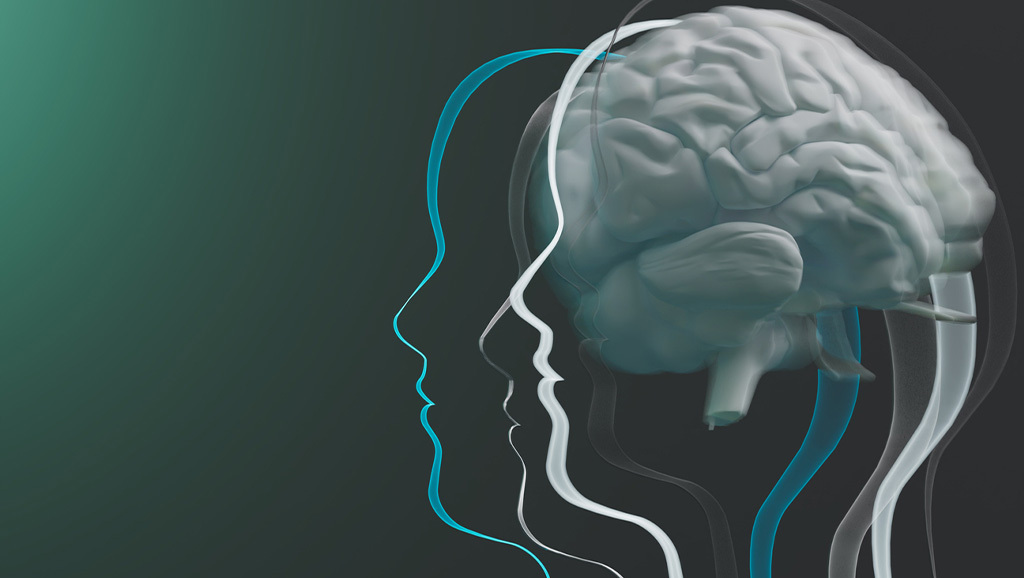Since 2009, scientists around the globe have worked to create the Human Connectome, a structural blueprint of the various neural pathways and connections that underlie thought, reason, emotion, and behavior in the brain. Thanks to those pioneering efforts, we now understand that different regions of the brain work together in concert, forming specific networks that facilitate movement, or learning, or our interactions with others—the cognitive skills that allow us to survive and thrive in our daily lives. Yet, despite these advances, it’s still not entirely clear how these networks may differ from person to person. New research from the University of Buffalo, using computational models of individual people’s connectomes, shed light into individual differences in brain activation patterns, as well as how those patterns may change over time.
Computers and Chimera States
Sarah Muldoon, a mathematician at the University of Buffalo, has long been interested in understanding individual differences in the brain. While human beings share similar brain networks that underlie skills like auditory functioning or how we pay attention to the world around us, brain scans show that these networks can be activated in different ways in different people.
Muldoon and former postdoctoral fellow Kanika Bansal wondered if chimera states, a concept used in modern physics, might offer some insights into how individual connectomes show different patterns of activation. Physicists were intrigued to find that when they coupled several oscillators (devices that produce energy waves) together in the exact same fashion, they did not always produce the same kind of consistent, synchronized activity as expected.
“These chimera states are those different patterns of activity, and we see that they arise from complex dynamic systems,” said Bansal, now a postdoctoral researcher at Columbia University. “You see, even in identical models of these oscillators, that half of the population will synchronize and other half remains desynchronized, and it’s unclear why. So if you think of the brain as a combination of oscillators, you could imagine that regions in a particular brain network might synchronize, or co-activate different brain areas, in different ways, which might explain why we see individual differences in different cognitive functions.”
Muldoon, Bansal, and colleagues hypothesized that the idea of these chimera states, applied to brain activation, could help explain how the brain organizes, co-activating networked regions, to give rise to specific functions. They created computational models that mapped the white matter tract connections between different regions of the brain for 30 different people and then ran simulations to see what areas would activate after a single region was stimulated, measuring the synchronization of brain activity across known cognitive networks.
The group discovered that large-scale patterns of brain activity often varied dramatically across individual brains when different networks were stimulated. While the auditory network showed similar activity when specific regions were stimulated across the 30 different brain models, the frontoparietal network, known for acting as brain-wide communication hub, and the ventral temporal association network, involved with organization and categorizing sensory representations, showed impressive variability in activation patterns. In addition, when the group stimulated two different brain regions in the same network, they could see remarkably different patterns of activity in model of the same person. The results were published April 3, 2019, in Science Advances.
“We saw that some systems showed drastic diversity in activation, where if you stimulated one region at one time, everything would synchronize, and if you stimulated a different part of that network at another time, absolutely nothing would synchronize,” said Muldoon. “What was really interesting wasn’t just that we were able to produce these chimera states but that we produced distinct patterns which could help us better understand these partial synchronizations and what they may mean for how these different brain systems work.”
Big Data Computer Models
Russell Poldrack, a neuroscientist at Stanford University, said it’s difficult to study individual differences; for one thing, researchers need access to large data sets of neuroimaging data, where individual participants are scanned both during tasks and at rest. He argues that computational, or in silico, models of brain activity can not only help scientists better parse all that data but do experiments that they might not be able to do on a living human.
“If the model is precise enough, you can start to ask, ‘What happens if I cut a connection here or lesion this particular region here?’” he said. “You can really look at what happens when you tweak particular knobs in these models and get an idea of how it might affect brain structure or the function of the model’s brain activity.”
He added that he was excited to see the chimera-state model being used to probe questions about individual differences in brain activity.
“This is a really cool idea that’s been percolating in the physics and dynamical systems literature for a while,” he said. “The brain is a dynamic system and the study authors showed that you can get the kinds of interesting network segregation that we see in the real brain, as it changes over time or as it varies from person to person. It’s a cool contribution.”
Muldoon said that this kind of modeling might help better distinguish true signal from noise in neuroimaging data as scientists study individual differences, and in it may also help sharpen personalized medicine strategies as well.
“We are already doing brain stimulation treatments and neuromodulation for disorders like depression and Parkinson’s disease,” she said. “As we continue to develop these kinds of treatment strategies, it’s going to be really important to understand where there may be a lot of individual variability in activation patterns between people, so you can make sure you are stimulating the right areas.”
That said, Muldoon argued that the most important takeaway from this study is that there is a lot of diversity in patterns of brain activity and it’s important that scientists are able to develop methods and models to better quantify and understand such differences.
“Using this kind of framework, we can start to ask, ‘What regions are involved in this particular function? How might the activation pattern differ if I stimulate here versus there?’” she said. “That is the kind of information that can tell us something about how each of these networks interacts with the brain as a whole, as well as how their activity may differ from person to person, or even how it may differ in one person over time. We can really start to look at the different factors that contribute to these different connectivity patterns and understand how they work together to give rise to a particular ability in the brain.”




